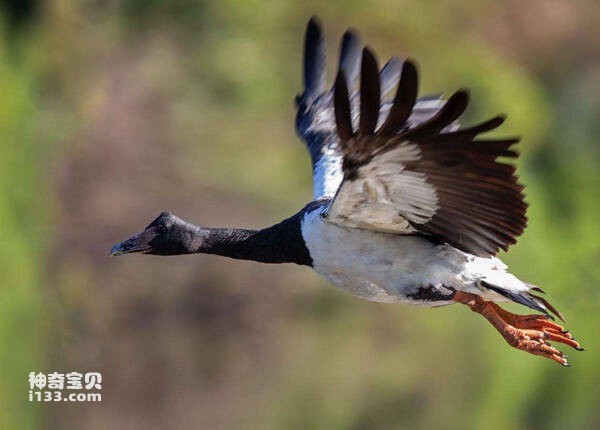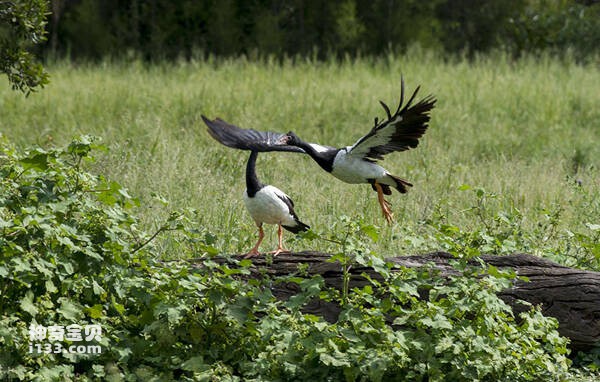Anseranas semipalmata
IUCN
LCBasic Information
Scientific classification
- name:Anseranas semipalmata
- Scientific Name:Anseranas semipalmata,Magpie Goose
- Outline:Waterfowl
- Family:
Vital signs
- length:75-85cm
- Weight:About 2.07kg
- lifetime:No textual research information is available
Feature
It is a "living fossil" of birds that appeared 25 million years ago
Distribution and Habitat
It is found in Australia, Indonesia and Papua New Guinea.
Magpie geese live in a variety of dry and wet season tropical rivers, swamps or wet meadows along the coastline.
Appearance
Magpie geese are 75-85 cm long and weigh 2070 grams. Large waterfowl of Australia and Papua New Guinea. It is very different from its relatives and has a unique shape. The two sexes are similar, the bird head has a hump, the body feathers are black and white, such as magpie, so the name. Neck and legs long. No webbed toes. The beak is long and hooked, and the face is bare, like a vulture. Unlike other waterfowl, they gradually change their flight feathers, so there is no period when they cannot fly.
The feathers are sometimes reddish brown in the dry season. The head, neck, and chest of the adult bird are high, and most of the wings and tail are black, in marked contrast to the white side of the lower body, the wings, and the inner side of the tail. The goose's bill is long and straight, mainly yellow with pink and rose-red markings. Face bare with pink or red, during the breeding season. The claws of magpie geese are very slightly yellow.
Details
The Magpie Goose (Anseranas semipalmata) has no subspecies.

After the breeding season, magpie geese move to favorable areas in large family groups and gather in large groups of several hundred when foraging. It is mainly vegetarian, mainly green plants, rushes, reeds and wild rice. Tubers and roots are also eaten on land. To do this, a wide pit is dug and the entire head and neck are buried in it.

The nesting density of magpie geese depends on location and year. Mating is possible throughout the year, with breeding beginning in the rainy season, usually October to November. The nesting takes place in two stages. The goose builds its first folded prototype nest out of vegetation and then places it in a cup-shaped nest. Male geese have two female mates, and often all three live together and remain united overall. In nature, females usually lay 7-9 eggs per nest. But if two females occupy the same nest, the number may climb to eight or 10. The incubation period is 24 to 26 days, and adult geese take turns to hatch regularly.
Listed on the International Union for Conservation of Nature (IUCN) 2012 Red List of Threatened Species ver 3.1 - Low Risk (LC).
Protect wild animals and eliminate wild meat.
Maintaining ecological balance is everyone's responsibility!








